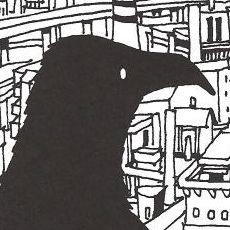Tag: romance
-
"If I told you that I came from the future, would you laugh?" Review of The Girl Who Leapt Through Time
/
/ ReviewsRead More →: "If I told you that I came from the future, would you laugh?" Review of The Girl Who Leapt Through TimeIf a good movie is hard to come by, surely a good anime movie is like one in a million; what a relief then, because for now, my long search is over – The Girl Who Leapt Through Time is that one in a million. Dubbed in some quarters as the anti-Ghibli, it offers a…
-
Kemonozume – 8 – Hard violence, hard sex, hard feelings
/
/ ReviewsRead More →: Kemonozume – 8 – Hard violence, hard sex, hard feelingsAt the beginning of this episode a boy student is excitedly kissing his innocent girlfriend for the first time. They hold each other in an emotional embrace, it is a pivotal moment in their lives, “Ah the day has finally come, Takako-Chan’s warm, soft, slippery thing is in my mouth…”. But the boy gets too…
-
Mushishi – 25 – Even without eyeballs, tears run
/
/ ReviewsRead More →: Mushishi – 25 – Even without eyeballs, tears runAlthough it would be harsh to say Mushishi had been in the doldrums of late, I must admit that the episodes succeeding number 20 have often flattered to deceive. It still looks as gob-smackingly beautiful as ever, but feels like more of a remote beauty, something I can admire but hardly love. I’m rejoicing then…
-
Kemonozume – 1 – Delicious gut-munching innovation
/
/ ReviewsRead More →: Kemonozume – 1 – Delicious gut-munching innovationThe moment I clapped eyes on its highly evocative promo art, I knew I’d love Kemonozume. It just looks so damn cool, completely in another league to the typical “doll face” anime style; here characters look and move like real people, the fluidity of movement and facial expression oddly fascinating. Forget following the narrative- simply…
-
Noein – And so we reach the end
/
/ ReviewsRead More →: Noein – And so we reach the endI feel like I’ve been watching Noein for years now and writing this entry is daunting. Complex multi dimensional time travel, heart breaking tragedy and gut wrenching friendships. Here is a series bursting with ideas and without breaking into an essay length review, it’s hard to do justice to the sheer narrative majesty of Noein.…
-
Mushishi – 24 – Bound for Bonfire Field
/
/ ReviewsRead More →: Mushishi – 24 – Bound for Bonfire FieldAnother episode that was only average in comparison with Mushishi’s previously sky-is-the-limit standards, “Bound for Bonfire Field” showcased one of the more deadly mushi Ginko has come across but failed to deliver the profound human empathy I’ve come to expect of this magical series. The main problem is this episode’s frustrating central figure; a female…
-
Mushishi – 23 – The Sound of Rust
/
/ ReviewsRead More →: Mushishi – 23 – The Sound of RustIn a village where humans are literally rusting away and being physically covered in (ever worsening) scabby brown marks, only this one girl (Shigure) appears to be immune from the disease. The bitter villagers blame Shigure for their ill-health, curse her existence and treat her as an outcast, and for her part, racked with the…
-
Rurouni Kenshin: Trust & Betrayal – Jaded no more
/
/ ReviewsRead More →: Rurouni Kenshin: Trust & Betrayal – Jaded no moreI was suffering from anime burnout earlier this evening and rather than try to watch something new (and inevitably hate it with this jaded perspective), I decided I’d dip back into my ever-growing DVD collection, pull out a classic I knew I’d love and rediscover my passion for anime. Rurouni Kenshin: Trust & Betrayal is…
-
Mushishi – 22 – The essence of individuality
/
/ ReviewsRead More →: Mushishi – 22 – The essence of individualityBy following the mysterious legend of the Uminaoshi, Ginko finds himself on a secluded island. Here it is said that when people die, if they so wish it, they can be born again; in a certain part of the sea, where the light shines even at night, the Uminaoshi mushi lives. What in essence defines…
-
Densha Otoko TV – If Looks Could Kill
/
Read More →: Densha Otoko TV – If Looks Could KillTsuyoshi Yamada is an otaku… a lonely otaku. He throws away his free time watching anime and surfing the net, dreaming of one day falling in love, but alas, he is merely an awkward, shy bloke who lives in his bedroom with nothing but dolls and figurines for company. One non-specific day, riding the train…
